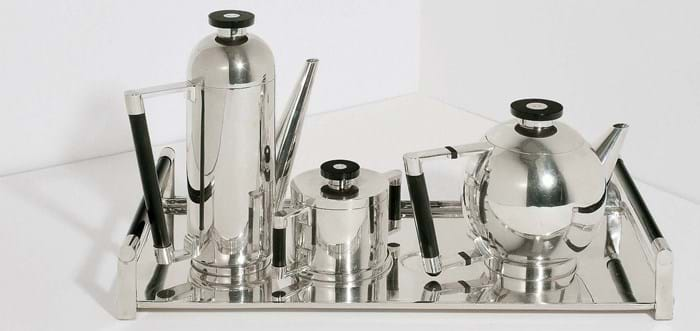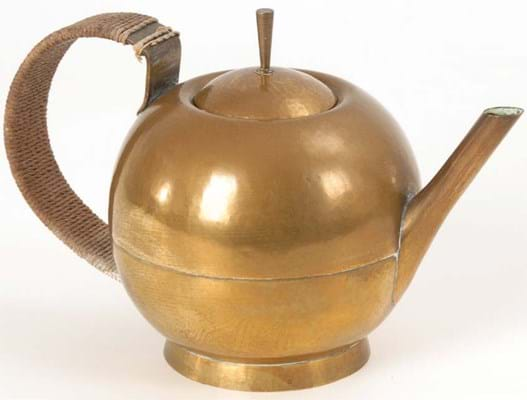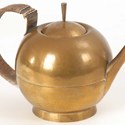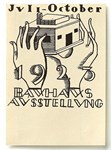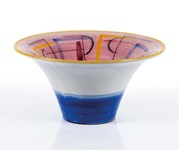At the lower end was a spherical brass teapot with hammered decoration and string-covered handle in the June 20-22 auction at Wendl (18% buyer’s premium) in Rudolstadt.
It was tentatively attributed to Hans Przyrembel who is certainly known to have produced teapots of an almost identical design. Nevertheless the bidders were not prepared to go above the moderate guide of €180 (£160).
Tea and coffee sets and accessories played a major part in the Bauhaus lifestyle. Even though Christian Dell is primarily known for a multitude of lamps that he created, like many of his colleagues he also devoted himself details of everyday life. Quittenbaum sold four different types of his tea-infusers (tea-eggs) from 1924 for €700 (£630), more than double the guide.
Slutzky at your service
At the upper end of the price scale was a silver and ebony tea and coffee service with tray at Grisebach. It was made by Naum Slutzky in 1927 at the behest of the German architect Fritz Block and his wife Anna Sophie.
Slutzky was not a trained silversmith but the knowledge he acquired in the metal workshop in Weimar enabled him to produce this service, which was a one-off in his oeuvre in this form. In true Bauhaus tradition he incorporated spheres, circles, cylinders and squares.
After a short tussle, the service was sold to the Museum für Kunst und Gewerbe (Museum of Arts and Crafts) in Hamburg for a lower-estimate €180,000 (£162,160).
Light and shade
There are, nevertheless, definite limits when it comes to the higher-priced pieces, however iconic they might be. Grisebach offered an original 1924 ‘Bauhaus Lamp’, (as the table lamp with its glass base and column and milk-glass semi-spherical shade designed by Wilhelm Wagenfeld has come to be known), but it failed to get away on an estimate of €100,000-150,000.
This lamp is probably one of the most copied pieces of modern design. In the 1980s, Wagenfeld worked closely with a company in Bremen to produce a re-edition. One of these found a new owner at Quittenbaum within estimate at €1500 (£1350).
When the Bauhaus moved from Weimar to Dessau in 1925, Wagenfeld stayed in the original workshop.
Here he worked on a successor to the Bauhaus Lamp. His Type 2 lamp with a cloth-covered shade, somewhat reminiscent of a traditional Chinese hat, was not the runaway success of its predecessor and at Quittenbaum’s auction an example estimated at €50,000-80,000 was unsold.
Seefeld sale
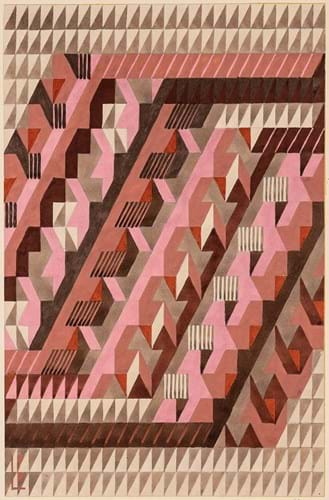
This 16 x 10in (40 x 26cm) gouache design from 1938 for a carpet by Lena Meyer-Bergner sold at Schneider-Henn for €1500 (£1350). It was accompanied by a photograph of the finished carpet and seven wool samples.
Wagenfeld also featured at the Schneider-Henn (20% buyer’s premium) sale on June 26 in Seefeld, south of Munich.
Several bidders competed for a group of six autograph letters Wagenfeld sent to a friend and magazine editor between 1973-75, in which he reminisces about his time at the Bauhaus, supplying numerous previously unpublished details about the evolution of certain designs. The hammer fell at €1700 (£1530), way above the estimate.
Also worthy of note in the same sale was a gouache design for a woven carpet by Lena Meyer-Bergner, the wife of Hannes Meyer, who took over the direction of the school after Gropius resigned in 1928.
Although it dates from 1938, five years after the closure of the Bauhaus, the monogrammed design is a clear indication that the spirit of the design school was carried on to new pastures after its official demise. A collector secured it for €1500 (£1350).


